Ben Suga on Balancing Tradition and Creativity
A conversation with this ceramic artist, who dedicated himself to an ancient Japanese craft and realized that life itself is a work of art.
My first impression of Ben Suga, with his laid-back midwestern vibes and quiet intensity, is that he should've been in an indie rock band. But instead of music, he's pursued the centuries-old practice of Japanese ceramics, and has studied that tradition with a focus and a dedication that's rare these days. I've become mildly obsessed with the stunning, jewel-like tea bowls he creates, and I wanted to find out more about his path and creative process. I spoke with Ben (and took a few photos) in his studio near Woodstock, New York.
Gary: So Ben, can we talk about how you got involved in ceramics, and in particular the Japanese ceremonial tea bowl practice? Why did that resonate with you?
Ben: Well starting out, I think clay is such a physical material, it requires such a physicality. And it involves a balance between the mind and body. You can get very, very nerdy about grams of material and metal oxides and the firing process. But at the end of the day, there's just this honest physicality to moving clay around. I grew up in South Dakota and I was a wrestler in high school, so it's kind of similar, where you show up to practice every day for two-and-a-half hours, you put the work in, and you’re exhausted, and you do that for years. But after a few years, you realize that it isn’t really about brute force. It’s about these very subtle movements, like a tiny angle that is going to make a difference in leverage on someone’s ankle or wrist.
So at first, I think my interest in clay came from the physicality involved. And although it looks really easy, there's a difficulty that's inherent to it that's kind of appealing to me. I went to Japan after doing my undergrad, and I studied…
Gary: Were you in art school?
Ben: I was actually studying economics and Japanese. My grandfather is from Japan, and I’d been studying the language in high school and college. Then I went to Japan on a study abroad program my sophomore year of college. Every day we had four hours of language class in the morning, and three hours of business class in the afternoon, and then we could run around Tokyo the rest of the time.
So I ended up studying economics and Japanese and then finished that at University of Nebraska in Lincoln. But oddly, the University of Nebraska, still to this day, has one of the best clay programs in the country. I had thrown clay a little in high school, and I really loved it. But it wasn't until my senior year of college that I took a sculpture class. Then after college I applied to the JET program, that's the Japanese English Teacher transfer, and they let you choose the location. I had heard Karatsu was a ceramics mecca in Japan, and I had just taken this clay class — and realized that I should have probably been doing that for undergrad — so I picked Karatsu.
I had this image in my head that these clay studios in Japan would have their doors open to this foreigner coming in and learning. It's interesting, because I think in a sense, the ceramics world in Japan is almost like the painting/art world in America, where you have to know people to get invited into it. But I got really lucky and I met some of the 15th generation families that are still working there. Karatsu was a port city to Korea, so a lot of that tea culture came in during the Momoyama period, which was in the 1500’s, and a lot of those families are still there, working in clay.
I’d read a book about this legendary potter Takashi Nakazato, who lived in Karatsu. He was the person I'd actually wanted to learn from when I was formulating my dream. So when I got there, basically everywhere I went the first question people would ask me was, "Why'd you come to Japan?" And I would say, "To meet Takashi Nakazato." It's a small town, so eventually the word got around and I ended up meeting his son, Taki Nakazato. Taki was in his forties and had taken over the responsibilities of the studio, and he wanted to learn English. So I started going to their studio once or twice a week, and he would just give me a space to work, and then I would just kind of fiddle around in the studio while they were working.
Gary: That must've been an incredible experience. And then you would also teach him English?
Ben: Yeah, and then we would have dinner after that. It was this beautiful house, and the food was incredible. The environment was idyllic and like a fantasy in many ways, but I also felt a level of discomfort witnessing the strict hierarchy that existed between teacher and apprentice. Throughout the day and into the evening, the apprentice had to pay constant attention to the needs of the teacher, the family, the studio, and the land. It was absolute commitment.
Gary: Was there an approach that you learned there? What are some of the things you learned from a creative or artistic side?
Ben: Everything there is embedded within 400 or 500 years of practice. So within these 14th, 15th, 16th generation families, you can almost draw a line back very literally, where this is how that family had worked that whole time. So thinking of tradition as a vehicle in a way, where you've got all these tools and almost fractal information, like the way they would prepare the material, or wedge the clay. Their tradition is embedded in all these actions which might seem very mundane. But it's a whole foundational practice that's then connected to all the other things that you’re actually doing on the wheel.
“It’s this structured physicality; not many things were passed through conversation in words. The way this tradition relays information is very physical.”
So it’s this structured physicality; not many things were passed through conversation in words. The way this tradition relays information is very physical, like you put your clay on this side of the table, your water goes over here, not over here. Even to that degree of specificity. How you throw the clay, the actual way that you touch the clay, it’s all connected to the specific tradition. And then there's the culture of the object itself — you dig the mud, that gets formed and then fired, but then everything that will happen to that object afterwards is really very important. Which ceremony is it connected to? Is it for the matcha ceremony? Or is it for Japanese kaiseki dining? It’s all part of a specific tradition.
Gary: How long did you stay in Japan?
Ben: I was there for a year-and-a-half. My time in Japan pretty much culminated with an invitation by Taki to fire their noborigama, which is a 45-foot-long wood-fired kiln, and it was a seven-day-long firing. It took about two weeks to load the kiln, it's really quite an event in the sense that all their physical energy for months culminates to this one point. They basically shut down the entire studio, and then six people tend the kiln around the clock for a week, two people per shift. I didn't realize it at the time, but it was quite an honor to be invited to participate. It was pretty incredible to be part of it, and just to live that cycle.
Then I had this choice of whether I should stay and apprentice in Japan or go back to America and apprentice. I found out about this American potter, Richard Bresnahan, who had apprenticed with Takashi Nakazato. He was actually Takashi's first American apprentice. He was in Japan for four years in the late seventies, but then he’d gone back to Minnesota. He had been doing pottery there ever since, and he had been taking apprentices on.
I wrote him a letter to ask him what he would recommend, I basically said, "Hey, I'm here with the Nakazatos. I really want to do this for a living. What do you think?" And he was like, "I recommend coming back and firing with us," because they were going to do a 10-day-long wood firing. So I ended up going to Minnesota and I was there for two-and-a-half years apprenticing. Even though I had the year-and-a-half of study with the Nakazatos, I basically started back at square one in that apprenticeship model with Richard. But in a sense, I was still working in the same tradition as the Nakazatos, since he’d also trained with them.
Richard had told me, “If you're going to be an American potter, you should apprentice in America.” In ceramics you’re working with indigenous material and tools. So you need to get to know the materials of the culture that you're living in. And that made sense to me.
Gary: That’s great advice, I think artists in any discipline need to think about that sense of place and using the materials around them. When you apprenticed with Richard, were you making tea bowls, or other forms?
Ben: That's a good question. In the apprenticeship, the first form you learn to make is just... It looks like a hockey puck. You would throw maybe 200, 300 of them every night, to build up that muscle memory of making them the same diameter and the same height. And when you could get each piece to be the exact same height, the exact same diameter, that's when you could move on to making the next form. So yeah, I think I was on that first form for about a month until I perfected it. There was one guy who was a senior apprentice when I got there, and he’d spent six months making those hockey pucks.
Gary: Wow, my God.
Ben: I almost wonder if that was a little sadistic on Richard's part, but… Basically the structure was that you worked six days a week, from Monday to Saturday. You got in the studio at 8:30am, and from 8:30 until 3:00 it was studio tasks. So that was shipping, screening ash, and making clay. If you were a senior apprentice, then you were actually working on some of the studio pieces because your skills were up to that level. But then at 3pm you break for tea, and after you might do a little bit more work, just wrapping up what you needed to. And then from about 5pm to midnight, we would throw. So that was our throwing discipline plan.
“For months I would be making the same form over and over, and asking myself, ‘Why am I doing this?’ And then all of a sudden the reason would reveal itself.”
But then you would take this journey through the traditional forms. So after the hockey puck you’d do this form called the Tojin, which was just a very small, flat, clay plate. And those were actually functional in a sense, because they would use those to load pieces onto inside the wood kiln. So even the lowly apprentice who's just starting out, their physical energy is being subsumed by the tradition to keep it going. And that was the interesting thing for me.
For months I would be making the same form over and over, and asking myself, “Why am I doing this?” And then all of a sudden the reason would reveal itself, and there was a purpose to every aspect of what I was doing. On an individual level, you're building up your technical ability. You would use those small clay plates to practice carving and trimming, and the stakes were kind of lower.
Gary: And at least the material's not being wasted, like you said. It's becoming part of the process in this other way.
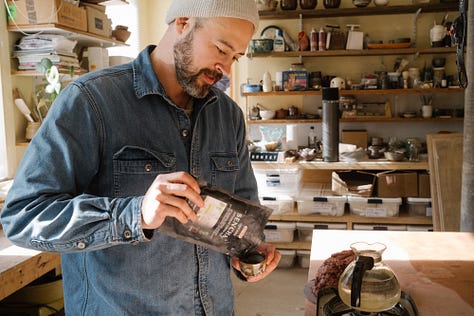

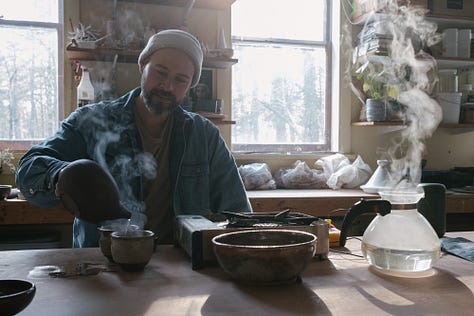
Ben: Exactly. Slowly the forms I was working on would advance bit by bit. And then right about the one-year point is when you, as a tool, are sharp enough to start working on some of the studio's work. Not throwing, because your throwing skills at that point aren't nearly good enough. But brushing, glazing, waxing, the little steps that take time but don’t require high precision. But I would say the throwing… it’s not until fairly recently that I felt like my throwing has gotten to a decent point.
Gary: And how many years have you been doing this now?
Ben: 15 years. And I'm surprised, I'm just like, “How does that happen?” It's just wild that it keeps refining. After my apprenticeship, I thought, “I did it! I'm good!” But if I pick up some of my work post-apprenticeship, or even from a few years ago — and maybe it's not evident to the average person — I can see the differences and the inconsistencies. So it's kind of gratifying.
“Within that tradition there's so much structure, it’s very confining. But creativity always has to find a way.”
But we were talking about the structure of tradition as a place for creativity to live and grow. Well, within that tradition there's so much structure, it’s very confining. But creativity always has to find a way. So many variables were held as constants in the forms that you're making. So the only creative act was the way that your fingers were touching the clay. Because even the pieces you were making, you would often just throw them into the slip barrel at the end of the night. The pieces themselves weren’t the creative output. The creativity was embodied in the time you spent touching the clay, which was one of the best lessons.
Gary: Because the pieces didn't even really get made, they didn't get fired or anything?
Ben: They didn't matter. That's the secret that's hidden in plain sight with these apprenticeships. Because really it's your relationship to the material that's going to carry you through to the end, that's going to feed everything. But all that structure, I think in some ways, can stifle. You might have to have the right personality for it.
Gary: Yeah, I was going to say, the patience involved in putting that much work into something when you're not necessarily seeing tangible results. Most people are so results-driven.
Ben: I think the physicality, the natural, gratifying quality of touching the clay itself is... There's a reason why it's likened to flesh in so many biblical references. And even in the Upanishads, the religious texts of Hinduism, clay is flesh. There's this sensual quality, even the sound, that keeps you coming back. It’s a tactile joy. Some people are drawn to wood, some people are drawn to clay, and some people are drawn to different materials, and they kind of suit our personalities in different ways. Wood is very black and white. If you cut a 32nd of an inch off, you're not going to be putting it back. Whereas clay is forgiving in a way. You can push it. But it's rigid in other ways, and it’s about timing. Clay asks you to always pay attention to it, whereas with wood, you can walk away, and it's fine. It doesn't ask you to come back.
Gary: You can come back in a year and continue.
Ben: Yeah. But clay, it asks of you in different ways. So it asks for a constant presence, constant practice, and almost an obsessive going around the cycle. And I think it suits people with more of an obsessive nature.
Gary: This is an interesting point because there is that obsessiveness and the physical control to make the pieces and everything. But then there's this other side, the firing, where it's a little more about chance. You don't really know what you’re going to see when you open the kiln. You have an idea of how the glaze is going to look, but here's this randomness to it too. How do you reconcile those two sides?
Ben: Actually the closer you get to the practice, even the firing itself is this enactment of control and precision. But yeah, there’s a little bit more chaos. Throwing is very direct and immediate. You can see exactly what happens instantaneously. The firing process is like shooting an arrow, basically. It requires the same amount of focus, settling yourself, dropping your shoulders, relax, pull back. And with reduction firing, there are so many parts of the process where you're managing the air intake on a millimeter level. You're adjusting the damper a 32nd of an inch and checking the flame. “Oh, it's a little bit too reduced.” So there is this highly specific gesture happening even within the firing.
“The fire, the combustion that's happening inside that kiln, it creates chaos... Things happen at 2,350 degrees that are very hard to predict, even for scientists of thermodynamics.”
And because we’re working with these elements, the air, the fire, the earth, and the water, they all have a mind of their own in a way, like a character. The fire, the combustion that's happening inside that kiln, it creates chaos... Things happen at 2,350 degrees that are very hard to predict, even for scientists of thermodynamics. What's happening with pockets of oxidation reduction with these metal oxides and the iron and the tin, the cobalt, whatever it is that you have in the clay and in the glaze. So you're kind of creating the best conditions with what you know, but at the end of the day, you don't really know what's going to happen. The target is pretty small, so you still have to try to hit a target. But within that small space, there's a lot of chance and a lot of variables.
And I think that's what keeps potters coming back. You work so hard. You do a 14-hour firing or a seven-day firing, and you think that you either did everything wrong or you did everything right. And you get absolutely amazing, beautiful pieces, and you get absolute destruction, all at the same time. There's a confusion there, and it's that confusion that keeps you coming back. It's like, “Oh, is it because I started it at 10am and not 6am, and something about the barometric pressure that day changed things?”
Gary: I’m curious, do you play music while you're working? What's the role of music in your day-to-day?
Ben: Oh yeah. When I’m working I tend to oscillate between either silence, music, or podcasts. And lately, I've been listening to a lot of free diving podcasts, about free divers.
Gary: Really?
Ben: Yeah, and I think I get obsessed. I'll get obsessed with an album, where I'll put it on repeat. Like last year, I was listening to the Cocteau Twins’ Four-Calendar Café. I think it came out in '92. But I probably listened to that album like a 100, 200 times.
Gary: Wow.
Ben: It's just with that particular album, I feel like I'm in a David Lynch film that's a little brighter, and blue, and optimistic, like not as dark. And then something about that in-between, liminal kind of space, and I know the album so well that it just keeps me... It's very soothing, and it becomes this background of support. Because if I try to listen to something more challenging, I find it difficult to do when I'm making this work because I stop, and I have to digest what’s happening in the music.
Gary: And with the podcasts, doesn't that happen?
Ben: I can somehow let those conversations go. Somehow the sound of the music is more arresting than just human voices. Because I think this process of ceramics, at least mine, is such a solitary one, that often I'll go three, four days where my only trip into town is to go to a cafe to get a cup of coffee. And then hearing these stories, like the free diving stories of people pushing their limits. I tend to like to hear stories, like somebody telling their life story. It's a way for me to contextualize what I'm doing and where I'm heading.
Gary: Interesting. So have figured out what you’re doing and where you’re heading?
Ben: I find that there's always a meta problem that I’m working on beyond creating individual forms and finished pieces, and over the last few years it’s been: how do I create a system, a technology that could support this physical body’s survival and need for connection? How can my relationship to clay somehow feed and support that?
But I have this vivid memory of sweeping or mopping the floor one time, really late at night, I think it might have been two or three in the morning, just cleaning up. And this epiphany came to me, this realization. I think sometimes we can get caught up with the piece we’re working on, with the things we're making. But my realization was that my life is the art project. This is the piece, this whole thing. So I realized that even the mopping, somehow, is part of my art.
Suga Pottery website
Follow Ben on Instagram





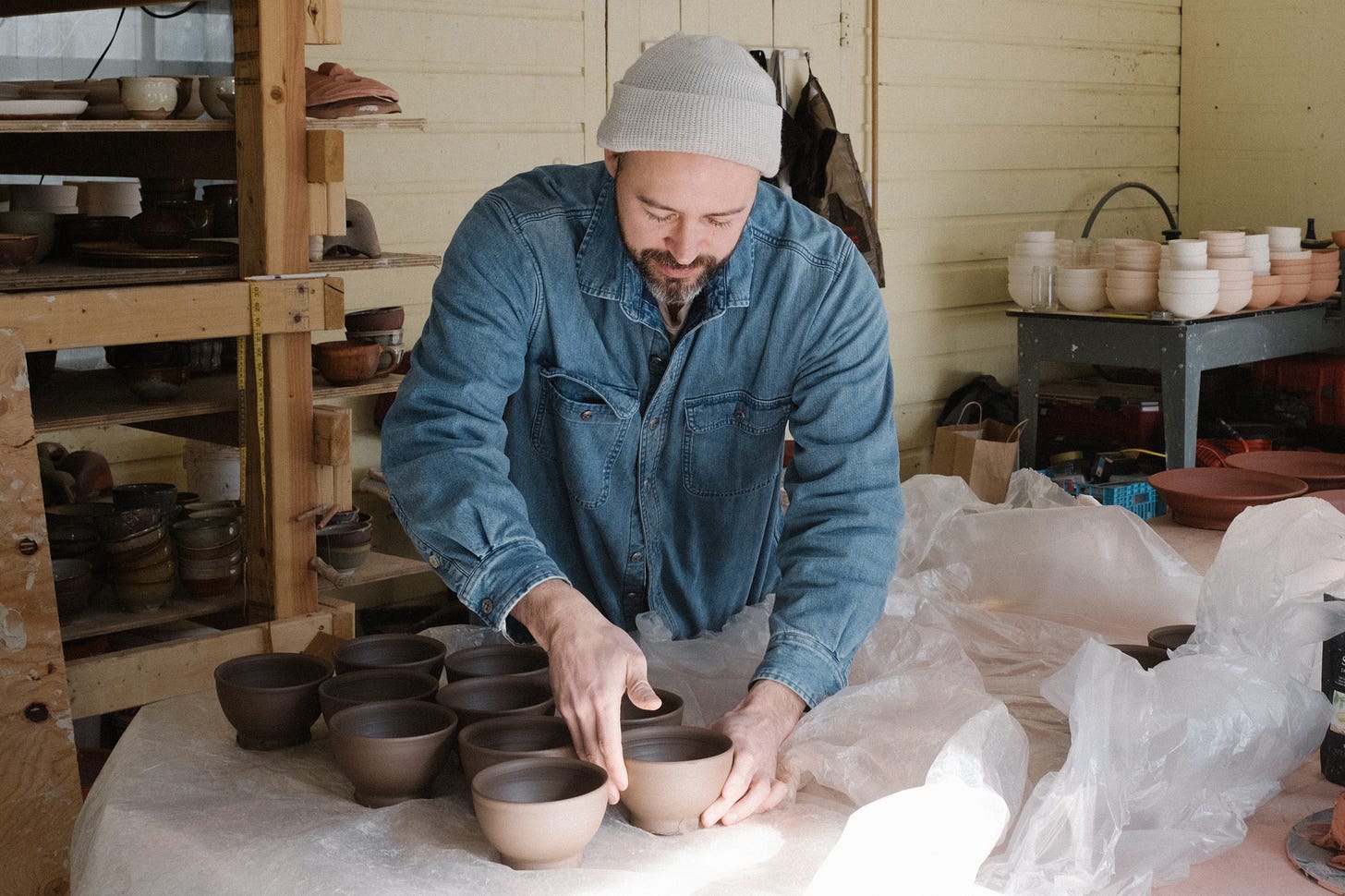

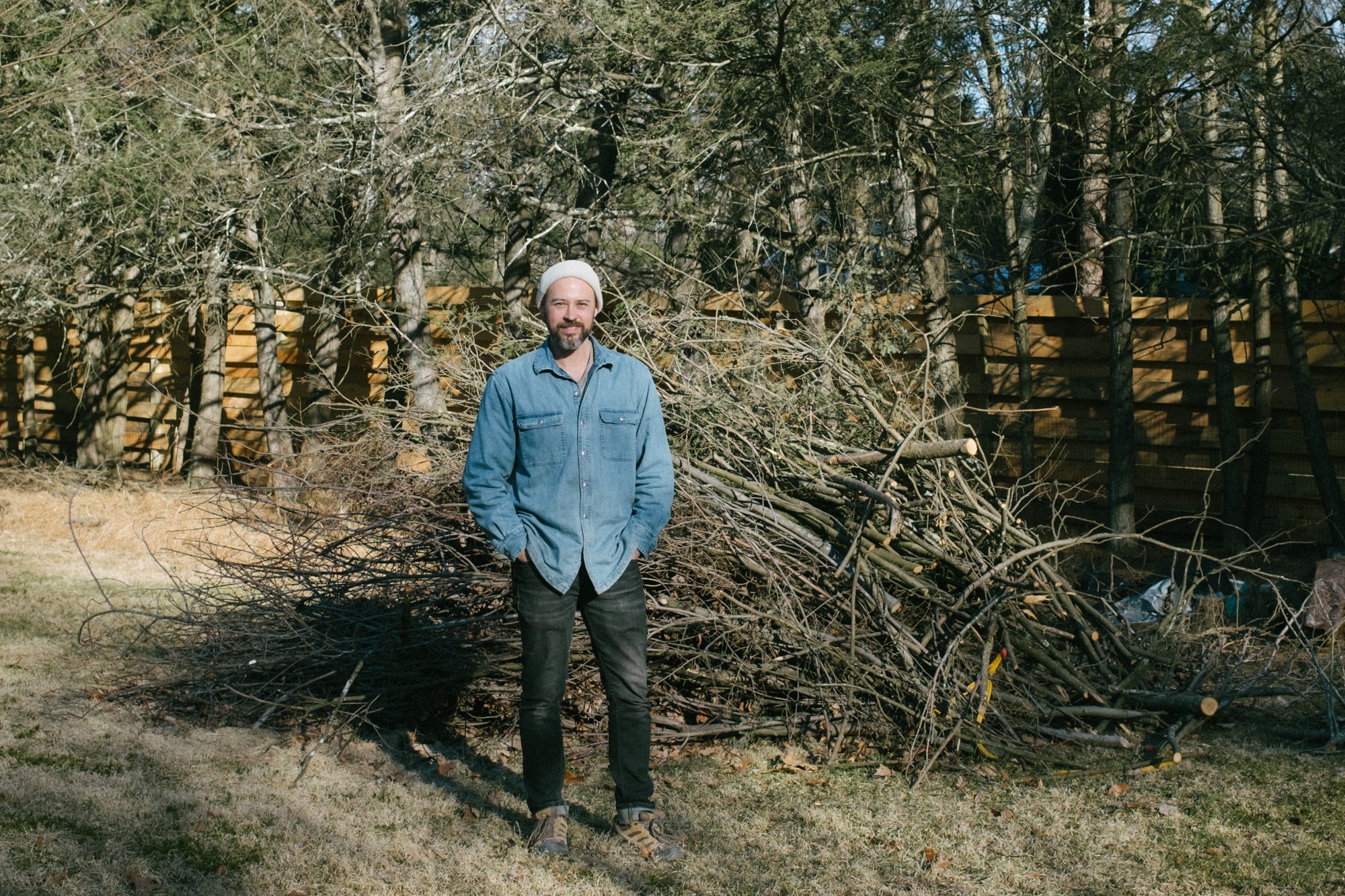
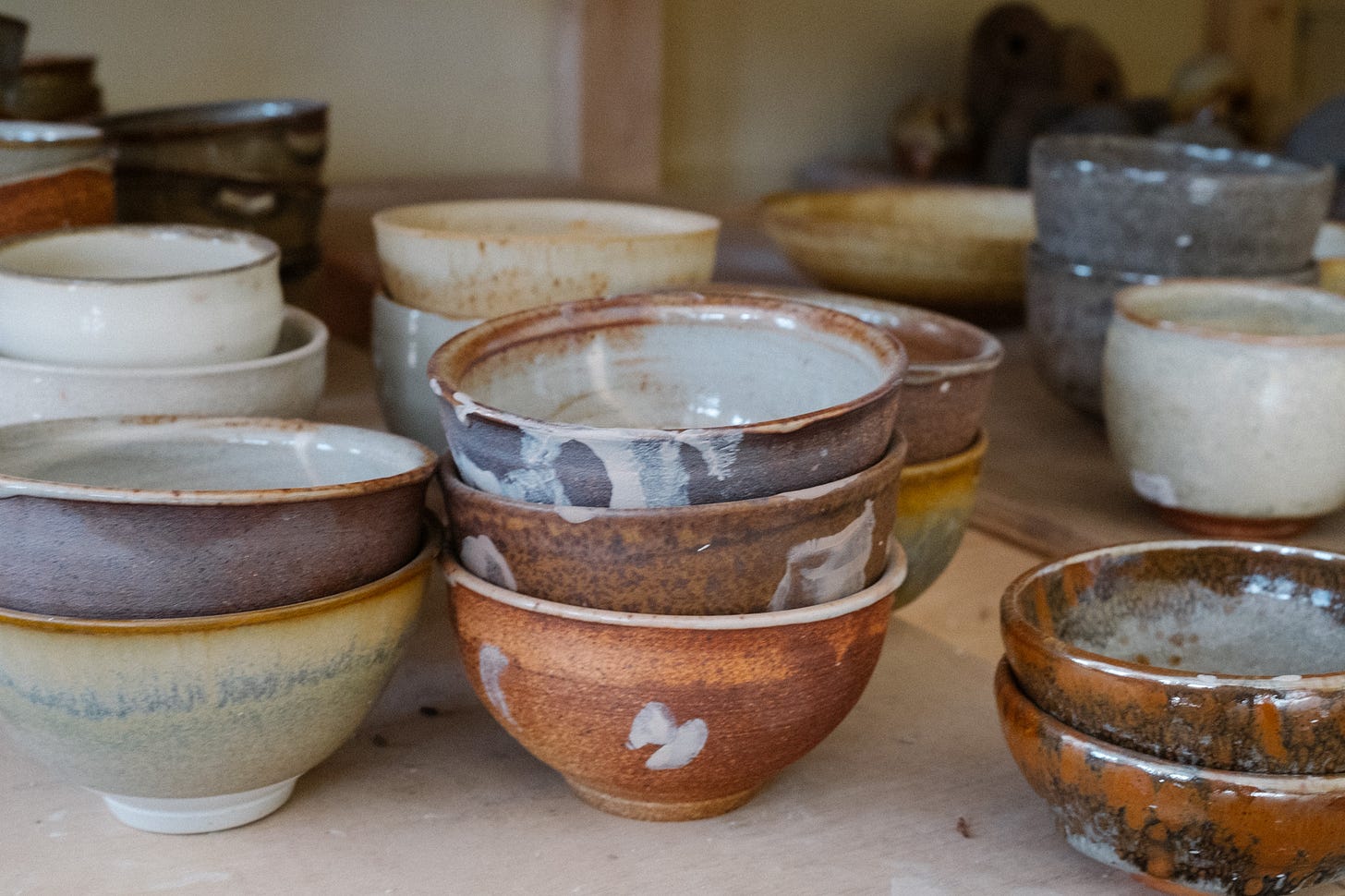
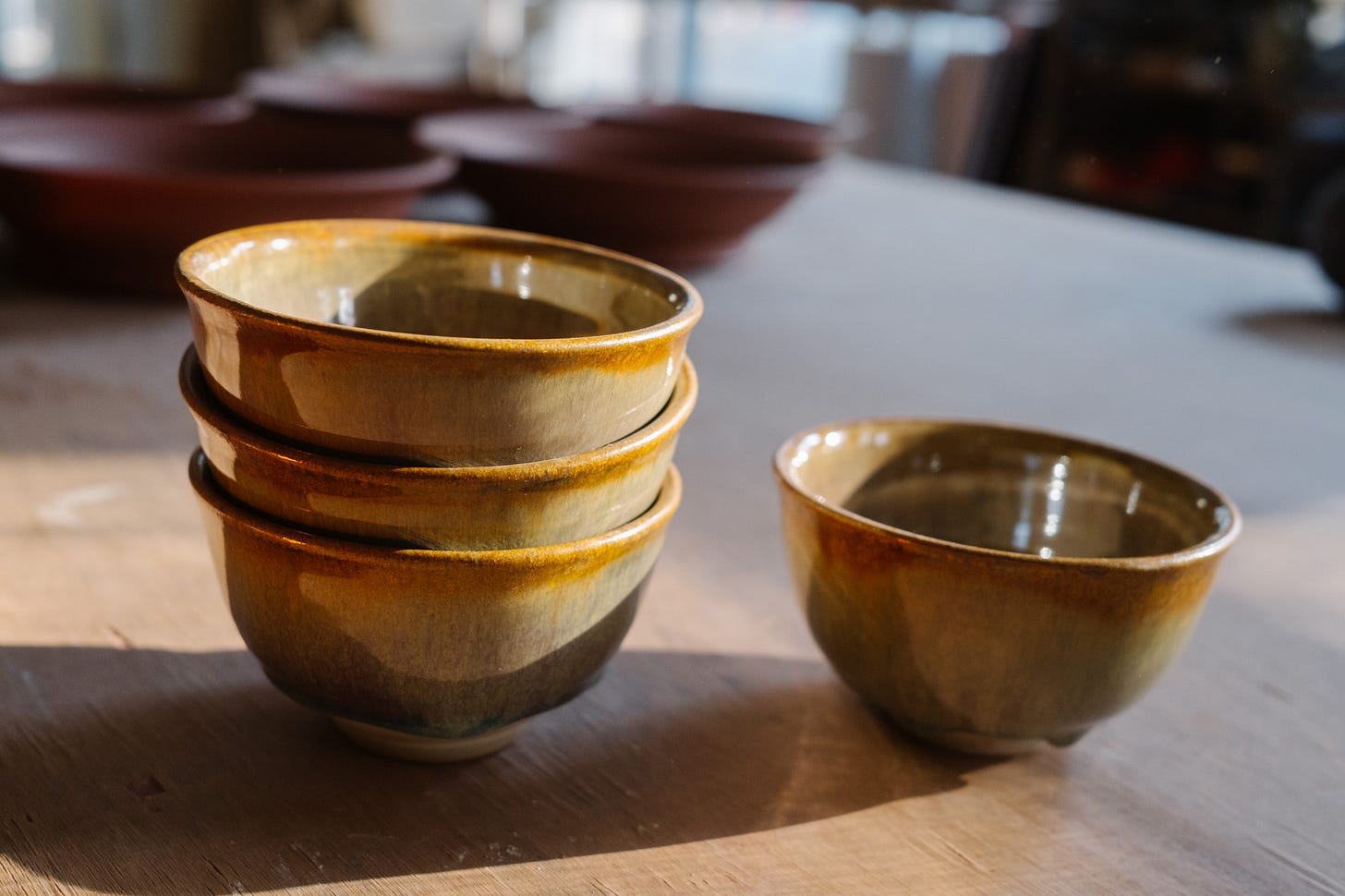
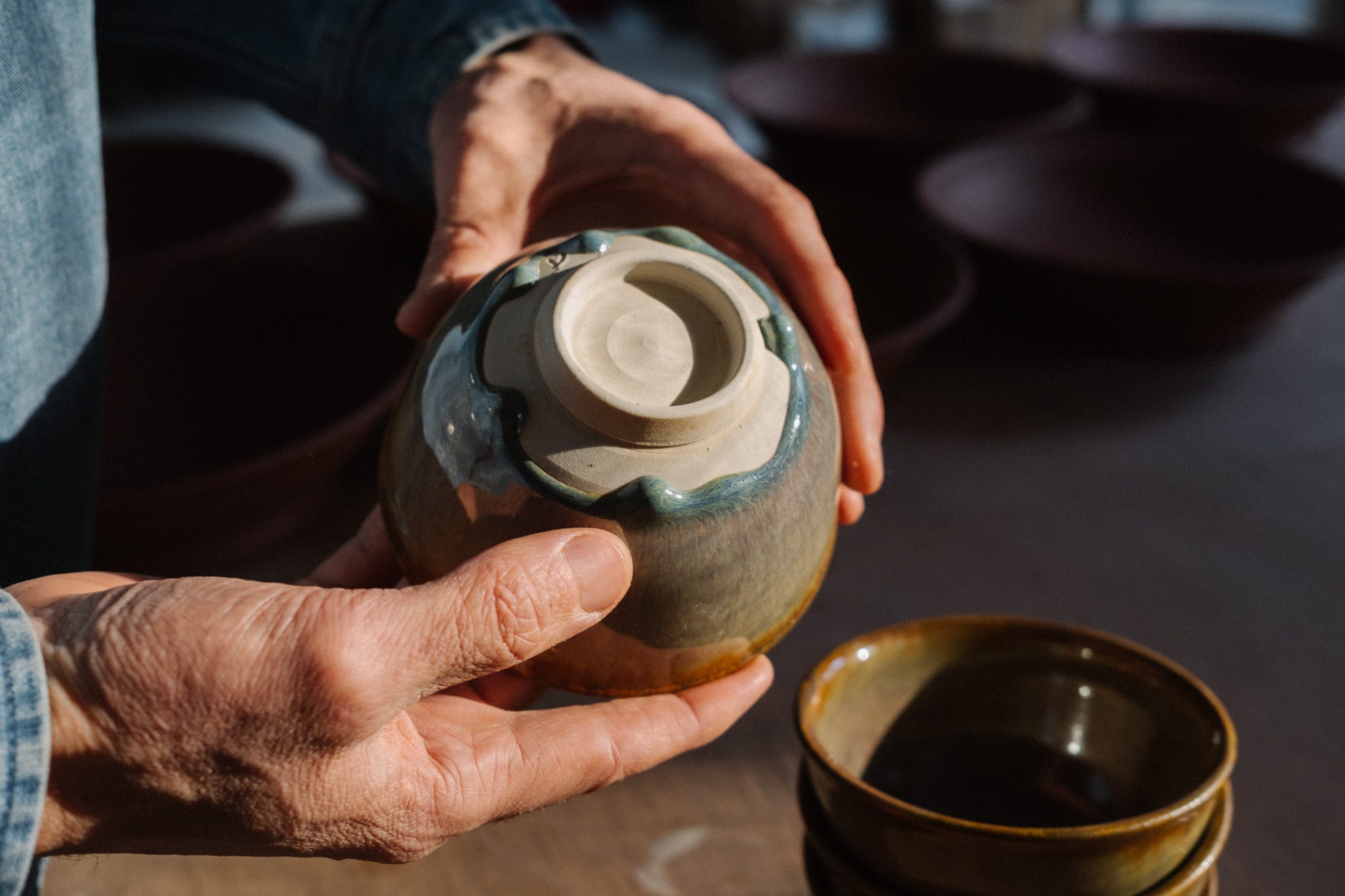
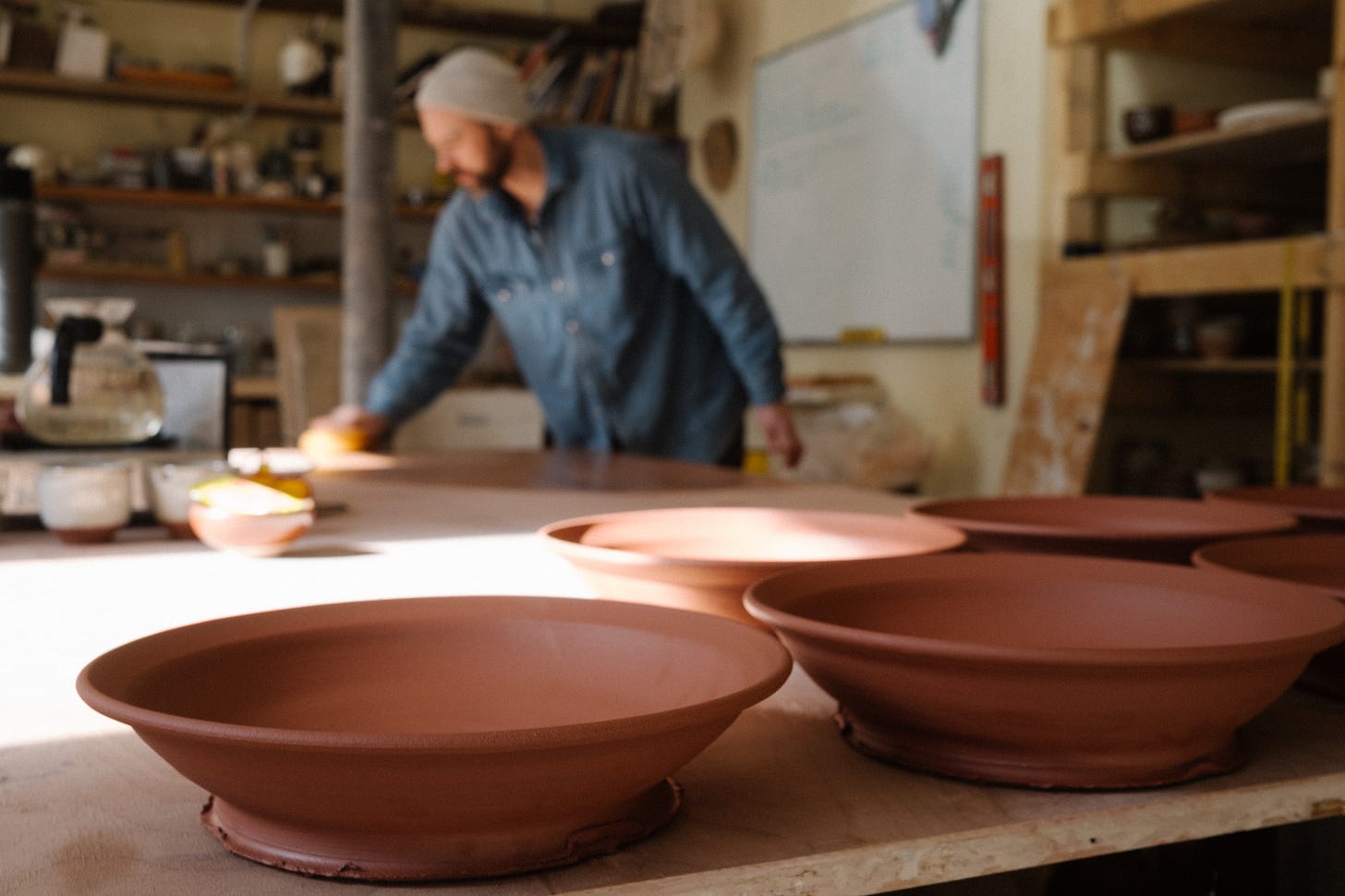

Time moves so quickly now, it's wonderful to read about an art practice that prioritizes slow, thoughtful execution. Ben's work is beautiful.
I am a now fan of Suga Pottery ! > Thank You > From an early First Diploma in Design Studies in The West Midlands ( UK ) I created a project around Japanese calligraphy as I have always had an interest in Eastern Provinces from Ninjitsu > Manga and I have recently bought via SuperFuture website their special of Tokyo ( then I sent the PDF to be professionally printed ) I now intend to travel East to procure some Japanese ephemeral dope accruements of Japanese sub_culture like Bape and create a zine about their style arcade video systems with the moniker : PhaseShift_ ( ML Smith + )